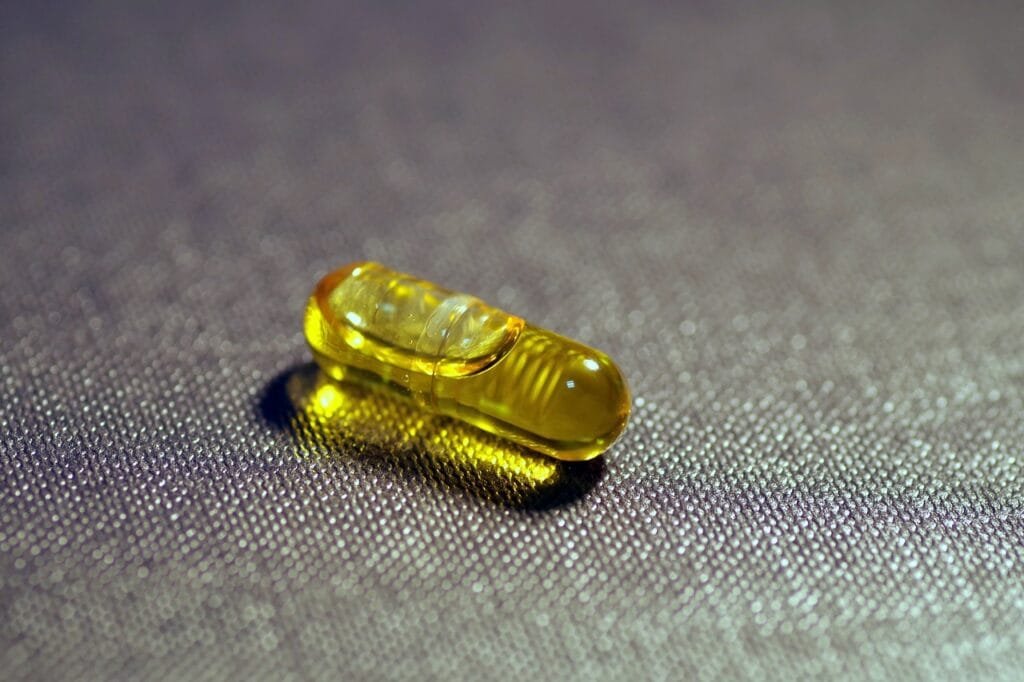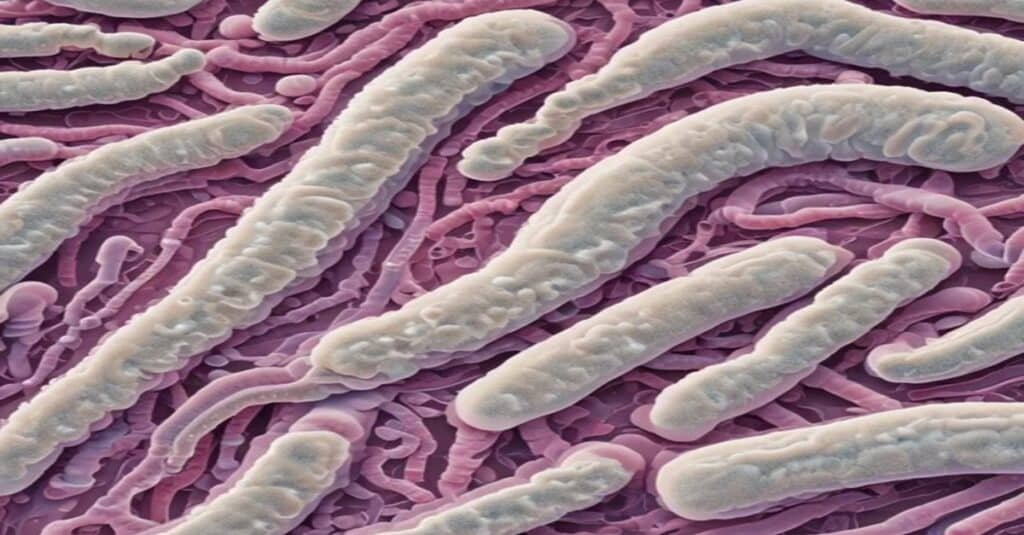Clostridium butyricum: A spore-forming probiotic and a source of butyric acid
Our Probiotic information series continues with more detailed information about individual species.
There are different types of healthy bacteria in the gut, each with its features. Some produce lactic acid and change the microenvironment of the gut. Others have antibacterial potential that counter the deleterious effects of pathogenic microorganisms. Others may even produce vitamins and a variety of extra nutrients for us. But there’s a specific type of probiotic that produces butyric acid, a short-chain fatty acid with plenty of health benefits.
Probiotics like these are beneficial for the human body, as opposed to bacteria such as Salmonella and Yersinia, which cause diarrhea. These healthy bacteria replace pathogenic bacteria and compete with them for the intestinal lining. They also produce substances, such as butyric acid, that contribute to gut health and general wellness.
Short-chain fatty acids, such as butyric acids, are produced by some bacteria with a specific metabolic capability. They have multiple health benefits, including anti-inflammatory effects in the colon and several implications throughout the body.
This article will go through one of the most popular butyrate-producing bacteria in the human gut. As the name implies, the scientific interest in Clostridium butyricum is mainly concerned with producing this substance in the human colon. After reading this piece, you will know how it can be a game-changer for you, especially in the case of metabolic disease.
What everyone should know about Clostridium butyricum
In the scientific literature, Clostridium butyricum is often referred to as C. butyricum instead of its full name. This bacteria can be found in many environments, including cultured milk products and various vegetables. Studies have shown that it colonizes infants very early in life, and up to 20% of adult humans have this bacteria in their guts (1).
This bacteria consumes undigested dietary fibers and produces short-chain fatty acids as a byproduct. However, this waste material that does not serve C. butyricum has a potential role in human health, especially butyrate and acetate. Butyrate is the primary short-chain fatty acid produced by C. butyricum, and it is known to modulate immune homeostasis, strengthen gastrointestinal barriers, and improve inflammatory conditions.
As with many other bacterial species, C. butyricum has different strains. Some have genes that produce toxins and may have a pathogenic potential. However, supplements should contain C. butyricum from a strain that does not make these substances. For example, strain CBM 588 is safe to consume as a probiotic. It is the most commonly used strain for treating antibiotic-associated diarrhea, and the European Parliament has authorized it as a safe food ingredient (2).
Benefits and health applications of C. butyricum
Intestinal dysbiosis refers to the alteration of the homeostasis in the gut microbiome, and it is associated with multiple health problems. The most common are gastrointestinal diseases, but studies also show that neurological and metabolic disorders can be rooted in gut microbiota alterations. C. butyricum is a promising therapeutic candidate for recovering our gut microbiota homeostasis. In doing so, it may also trigger various health benefits, as mentioned below:
C. butyricum helps other beneficial bacteria thrive in the gut
Besides being a probiotic itself with many health benefits, C. butyricum contributes to gut colonization by other healthy bacteria. Gut microbiome composition is fundamental to maintaining health. Ideally, we should have a variety of beneficial bacteria instead of a few probiotic strains.
Studies show that C. butyricum does not reduce the measurement of other bacteria in the gut—quite the opposite. Species such as Bifidobacterium spp. and Lactobacillus spp. increase their colonization rate in the presence of C. butyricum while decreasing other pathogenic cultures such as Enterococcus and Enterobacteriaceae. That’s why some supplements with C. butyricum contain different strains, including Lactobacilli and Bifidobacterium. They work together to colonize the gut and exert their beneficial effects (3).
C. butyricum may strengthen the intestinal barrier against pathogens
Besides working against pathogens and their influence, C. butyricum also strengthens our natural barriers in the gut. The intestinal barriers are made up of three layers: first, a layer of mucus, followed by intestinal epithelium, and the lamina propria. This structure maintains our tolerance of gut microbiota while helping us absorb nutrients. It is also a selective barrier that prevents toxins from being introduced to the general circulation and keeps antigens away from immune cells to avoid food allergies.
C. butyricum strengthens the first barrier, the mucus layer. This barrier provides a gel-like substance synthesized by goblet cells. It consists of gastrointestinal mucins, a type of glycoprotein that protects the body against colitis and tumoral invasions. In the presence of C. butyricum, goblet cells produce more mucin, decreasing intestinal damage by antibiotics such as clindamycin. This happens because butyric acid produced by C. butyricum is absorbed by goblet cells, reaching the metabolic machinery and stimulating the expression of the MUC genes (4,5).
One of the main barriers in the epithelial layer is formed by tight junctions, proteins that bind epithelial cells closely together. Without tight junctions, the gut would be permeable to toxins, allergens, and bacterial products, causing inflammation, food allergies, and the so-called leaky gut syndrome. C. butyricum is also known to increase the expression of tight junction proteins, improving the intestinal barrier through butyrate production (6).
C. butyricum changes how immune cells behave throughout the body
Immune cells should work in balance to protect the body against infectious diseases without causing excessive inflammation. In the gut, there should be specialized structures to recognize actual pathogens in the feces. Inappropriate activation of this process can lead to inflammatory diseases, such as allergies, autoimmune disease, inflammatory bowel conditions, and metabolic problems, such as hepatitis and diabetes. Regulatory T cells are essential to balance a normal immune response and its anti-inflammatory effects.
In this context, C. butyricum promotes intestinal tolerance and reduces inflammation by increasing circulating regulatory T cells. Besides working in the gut, C. butyricum also modulates the concentration of Th1 and Th17 cells in other tissues, such as the spleen, liver, pancreas, and brain. This probiotic produces substances that reach the maturation center of immune cells and promote the differentiation of regulatory T cells, increasing their number throughout the body. Doing so also protects the gut and the rest of the body from allergies, autoimmune disease, and chronic inflammation (7).
C. butyricum can alleviate different gastrointestinal complaints
Given the above, it is unsurprising that people with gastrointestinal complaints find relief after consuming C. butyricum supplements. Studies show this probiotic effectively restores gut microbiota balance after prolonged antibiotic use. Consuming C. butyricum and a strain of Bifidobacterium only takes 15 days to restore colonic mucosal architecture and fecal microbial diversity. It also decreases inflammation and improves uncomfortable symptoms (8).
The probiotic is also effective against Clostridium difficile infection and a type of Escherichia coli that causes diarrhea and hemorrhagic colitis, known as Enterohemorrhagic Escherichia coli, or EHEC. In both cases, C. butyricum inhibits toxin production by the pathogens and may even reduce adhesion to epithelial cells in the intestinal lining. The bacteria no longer bind to the gut and stop producing toxins, which helps control the symptoms and clears the infection (9).
Another probiotic application is for people with inflammatory conditions such as ulcerative colitis and irritable bowel syndrome. These conditions may trigger diarrhea, constipation, abdominal pain, bleeding, and a plethora of other signs and symptoms. In these conditions, there is usually a hypersensitivity to antigens, which causes mucosal inflammation and chronic damage. C. butyricum produces butyric acid, which counters inflammation and autoimmune problems by modulating the immune cells (10).
C. butyricum improves pancreas and liver metabolism
Studies have shown that this probiotic works directly on the gut and influences distant organs such as the liver and pancreas. As mentioned above, it regulates the production of regulatory T cells, Th1 cells, and Th17 cells far beyond the gut. However, it may also improve the metabolic function of the liver and pancreas, addressing problems such as diabetes and fatty liver disease. From its safe place in the gut, it may even influence the adipose tissue of people with metabolic disease.
Butyrate produced by this bacterium stimulates the production of a substance known as glucagon-like peptide, or GLP-1, which behaves as a hormone and goes into the bloodstream, signaling other organs such as the liver and the pancreas. With higher levels of GLP-1, glucose uptake improves, glucose levels decrease in the blood, the pancreas releases more insulin, and the individual reduces appetite levels. In the liver, this hormone reduces glucose formation and improves lipid metabolism, reducing fat storage and controlling hepatic damage. In the adipose tissue, GLP-1 inhibits the production of inflammatory substances fatty cells typically produce. Overall, this probiotic causes many changes, mostly induced by butyric acid (11).
C. butyricum may contribute to fat loss in some people
Studies are not yet conclusive, but they all point out that C. butyricum could also be a tool to maintain a healthy weight. Low levels of butyric acid are linked to obesity, diabetes, and metabolic disease. In these patients, C. butyricum becomes a source of butyrate and changes both glucose and lipid metabolism.
Studies in animal models show that supplementation with this probiotic may reduce weight gain and fat accumulation while improving insulin sensitivity and glucose tolerance. In other words, it can be used as a weight loss supplement that may reverse some metabolic syndrome consequences (12, 13).
C. butyricum protects the brain from neurodegeneration
Neurodegeneration is the process by which neurons are lost due to inflammation, abnormal neural connections, or apoptosis. C. butyricum relieves inflammation and prevents apoptosis through different pathways. The anti-inflammatory mechanism described above also works in the brain and prevents neurodegeneration. However, C. butyricum also increases the activation of a pathway in cells known as Akt, which reduces apoptosis.
Apoptosis is a normal process of clearance in which cells undergo self-destruction after detecting abnormalities and dangerous changes. In normal circumstances, apoptosis prevents cancer and tumors in the brain and throughout the body. However, when it is overdone, apoptosis may also cause memory deficits, learning problems, and other signs of dementia. C. butyricum can protect the brain from neurodegeneration through butyrate, maintaining cognitive, motor skills, and sensory functions (14).
Key takeaways from consuming C. butyricum
Clostridium butyricum, as the name implies, is a major contributor of short-chain fatty acids in the body, particularly butyric acid. After getting this substance, the gut lining activates a series of pathways that modulate the activity of the gut, the immune system, and distant organs such as the pancreas and the liver.
Thus, C. butyricum has many health applications, including those typically found in most probiotics and a few others. It regulates gut microbiota, reducing the incidence of infections and promoting the growth of beneficial bacteria. It relieves gastrointestinal symptoms in cases of antibiotic-associated diarrhea and ulcerative colitis. It also supports immune function while avoiding overactivation in autoimmune diseases and allergies. It is also beneficial for metabolic health, modulating glucose and lipid metabolism, and the impact of obesity and diabetes. Finally, it is also a promising agent against dementia and neurodegeneration.
This probiotic can be used alone, but it is much more effective when combined with others. Remember that Lactobacilli and Bifidobacterium thrive much faster in the colon in the presence of C. butyricum.
References:
- Mountzouris, K. C., McCartney, A. L., & Gibson, G. R. (2002). Intestinal microflora of human infants and current trends for its nutritional modulation. British Journal of Nutrition, 87(5), 405-420.
- European Commission. “Commission Implementing Decision of 11 December 2014 authorising the placing on the market of Clostridium butyricum (CBM 588) as a novel food ingredient under Regulation (EC) No 258/97 of the European Parliament and of the Council (notified under document C (2014) 9345).” OJEU 57 (2014): 153.
- Miao, Rui-Xue, et al. “Effect of Clostridium butyricum supplementation on the development of intestinal flora and the immune system of neonatal mice.” Experimental and Therapeutic Medicine 15.1 (2018): 1081-1086.
- Hagihara, M., Kuroki, Y., Ariyoshi, T., Higashi, S., Fukuda, K., Yamashita, R., … & Mikamo, H. (2020). Clostridium butyricum modulates the microbiome to protect intestinal barrier function in mice with antibiotic-induced dysbiosis. Iscience, 23(1).
- Burger-van Paassen, N., Vincent, A., Puiman, P. J., van Der Sluis, M., Bouma, J., Boehm, G., … & Renes, I. B. (2009). The regulation of intestinal mucin MUC2 expression by short-chain fatty acids: implications for epithelial protection. Biochemical Journal, 420(2), 211-219.
- Hagihara, M., Kuroki, Y., Ariyoshi, T., Higashi, S., Fukuda, K., Yamashita, R., … & Mikamo, H. (2020). Clostridium butyricum modulates the microbiome to protect intestinal barrier function in mice with antibiotic-induced dysbiosis. Iscience, 23(1).
- Kashiwagi, I., Morita, R., Schichita, T., Komai, K., Saeki, K., Matsumoto, M., … & Yoshimura, A. (2015). Smad2 and Smad3 inversely regulate TGF-β autoinduction in Clostridium butyricum-activated dendritic cells. Immunity, 43(1), 65-79.
- Ling, Z., Liu, X., Cheng, Y., Luo, Y., Yuan, L., Li, L., & Xiang, C. (2015). Clostridium butyricum combined with Bifidobacterium infantis probiotic mixture restores fecal microbiota and attenuates systemic inflammation in mice with antibiotic‐associated diarrhea. BioMed Research International, 2015(1), 582048.
- Takahashi, M., Taguchi, H., Yamaguchi, H., Osaki, T., Komatsu, A., & Kamiya, S. (2004). The effect of probiotic treatment with Clostridium butyricum on enterohemorrhagic Escherichia coli O157: H7 infection in mice. FEMS Immunology & Medical Microbiology , 41 (3), 219-226.
- Zhao, Q., Yang, W. R., Wang, X. H., Li, G. Q., Xu, L. Q., Cui, X., … & Zuo, X. L. (2019). Clostridium butyricum alleviates intestinal low-grade inflammation in TNBS-induced irritable bowel syndrome in mice by regulating functional status of lamina propria dendritic cells. World journal of gastroenterology, 25(36), 5469.
- Stoeva, M. K., Garcia-So, J., Justice, N., Myers, J., Tyagi, S., Nemchek, M., … & Eid, J. (2021). Butyrate-producing human gut symbiont, Clostridium butyricum, and its role in health and disease. Gut microbes, 13(1), 1907272.
- Shang, H., Sun, J., & Chen, Y. Q. (2016). Clostridium butyricum CGMCC0313. 1 modulates lipid profile, insulin resistance and colon homeostasis in obese mice. PloS one, 11(4), e0154373.
- Jia, L., Li, D., Feng, N., Shamoon, M., Sun, Z., Ding, L., … & Chen, Y. Q. (2017). Anti-diabetic effects of Clostridium butyricum CGMCC0313. 1 through promoting the growth of gut butyrate-producing bacteria in type 2 diabetic mice. Scientific reports, 7(1), 7046.
- Liu, J., Sun, J., Wang, F., Yu, X., Ling, Z., Li, H., … & Xu, J. (2015). Neuroprotective effects of Clostridium butyricum against vascular dementia in mice via metabolic butyrate. BioMed research international, 2015(1), 412946.
- https://www.nccih.nih.gov/health/probiotics-usefulness-and-safety




